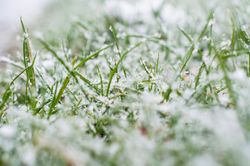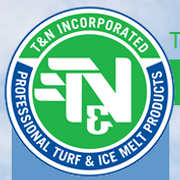What Happens to Your Lawn During the Winter?

In a climate like Missouri’s, it’s impossible to maintain a lush, green lawn year-round. You can, however, take steps to protect the grass during the colder months so it thrives during the warmer ones. From avoiding the yard to using eco-friendly ice melt products, there are ways to ensure the lawn comes back thick and vibrant in the spring. To help you get started, here’s what you should know about dormant grass.
When the Grass Goes Dormant
Several environmental factors cause grass to become dormant, which refers to a pause in growth patterns to preserve nutrients. Dormancy is most common when the temperature is lower and the days are shorter—when moisture and sunlight are in short supply—but it can also occur during drought-like conditions. The first sign is slowed growth; as the lawn loses its water supply, the blades eventually stop growing and turn brown.
While dormancy can protect a lawn until the weather warms, especially harsh conditions could kill the grass before spring. For example, if the blades are coated in ice for an extended period—anywhere from 30 to 120 days—carbon dioxide gas can accumulate underneath until the grass essentially suffocates.
Applying standard ice melt may seem like a way to combat the issue, but these products typically contain salt-based ingredients, which draw moisture away from the lawn and dry the roots even more. The melt can also release sodium and chloride ions, inhibiting the grass from absorbing essential nutrients. Too much chloride can also prevent the grass from producing chlorophyll, which means the blades won't be able to convert sunlight into energy once the weather warms.
Cold, dry wind, especially in exposed areas, can desiccate the grass by drawing moisture away. If the roots are frozen, the process occurs faster because the grass cannot draw water from the ground to replenish the moisture lost to the air.
Protecting Dormant Grass
 Once the lawn freezes, avoid walking on it, which can crush and kill the crown of the plant. Also, don’t shovel paths through the grass whenever it snows. Let the snow serve as a protective blanket that provides moisture as it melts. Mark the edges of your lawn to protect your grass from driveway shoveling and street plows, which can tear up the turf and cause irreparable damage.
Once the lawn freezes, avoid walking on it, which can crush and kill the crown of the plant. Also, don’t shovel paths through the grass whenever it snows. Let the snow serve as a protective blanket that provides moisture as it melts. Mark the edges of your lawn to protect your grass from driveway shoveling and street plows, which can tear up the turf and cause irreparable damage.
Maintaining decent drainage also helps protect grass from crown hydration, a destructive process during freeze-thaw cycles. Saturated plant cells can rupture after freezing, thawing, and refreezing rapidly. Finally, avoid spreading harmful ice melt products on your lawn. Instead, look for blends that are specially formulated for environmentally friendly use.
From fall fertilizer to eco-friendly ice melt products, T & N has all your winter landscaping needs. Based in Foristell, MO, this full-service supplier has been working with homeowners, small businesses, and farmers throughout St. Charles and Warren counties since 1988. To learn more about the premium ice melt products they carry, visit their website or call (636) 673-2505.
About the Business
Have a question? Ask the experts!
Send your question

